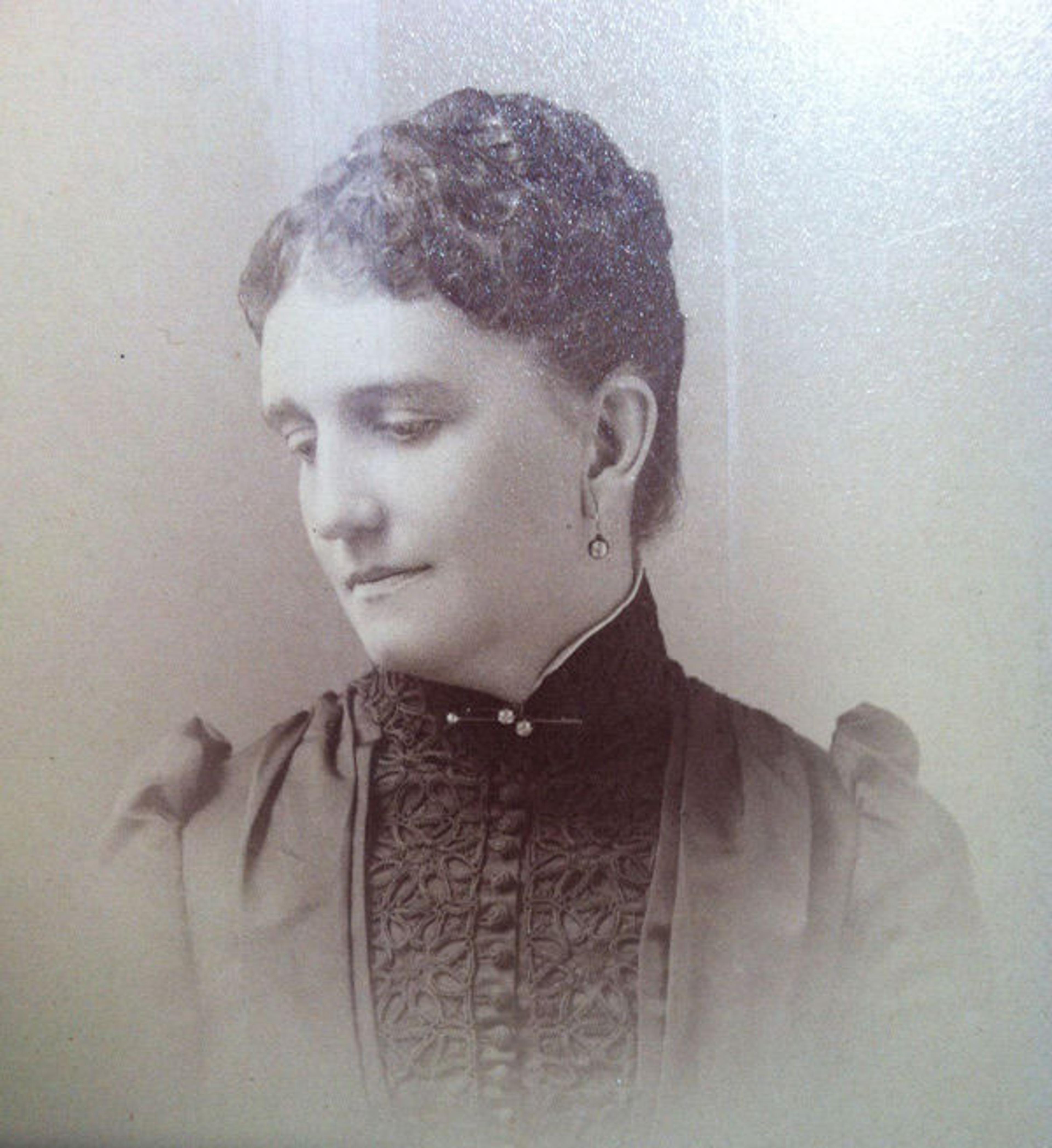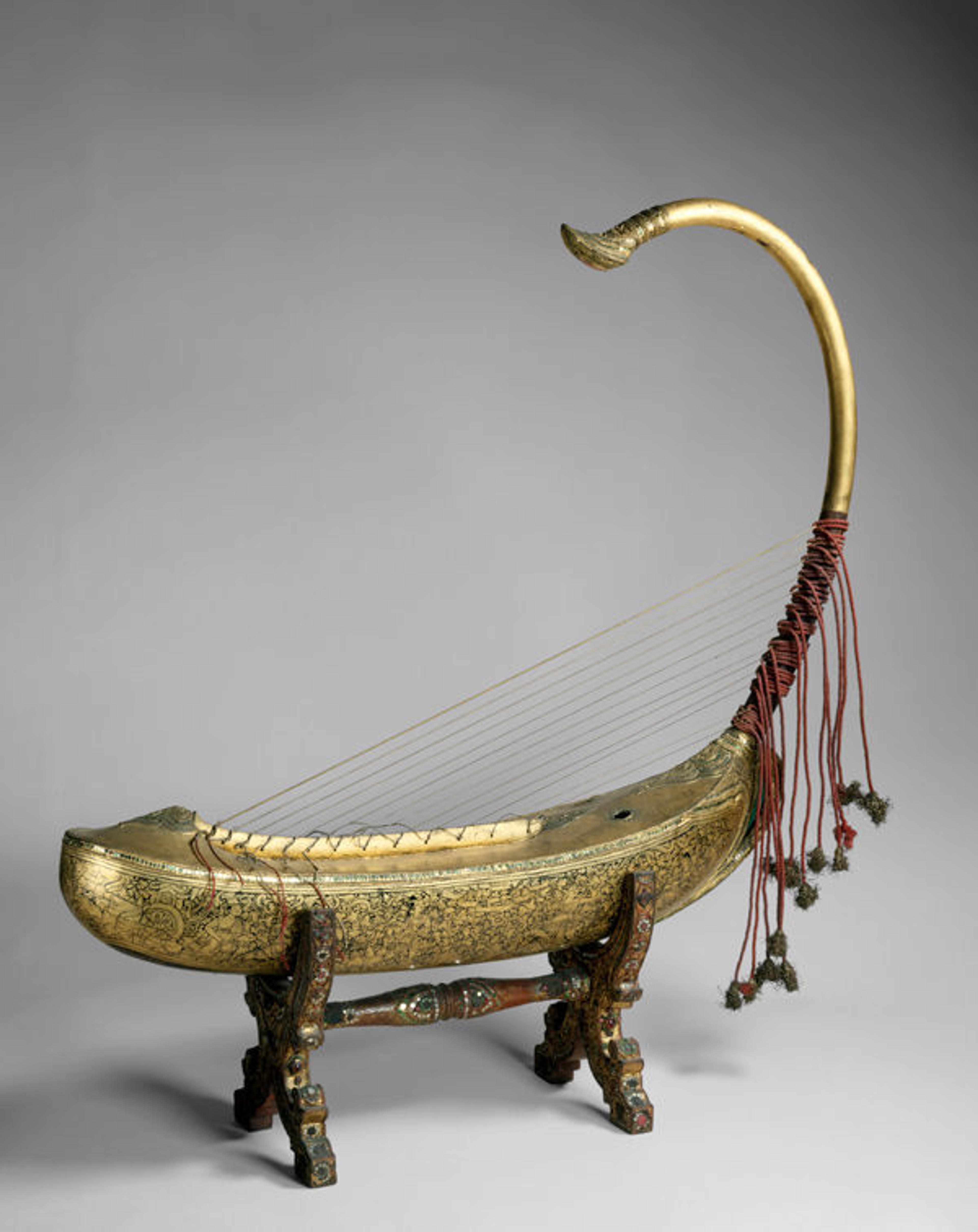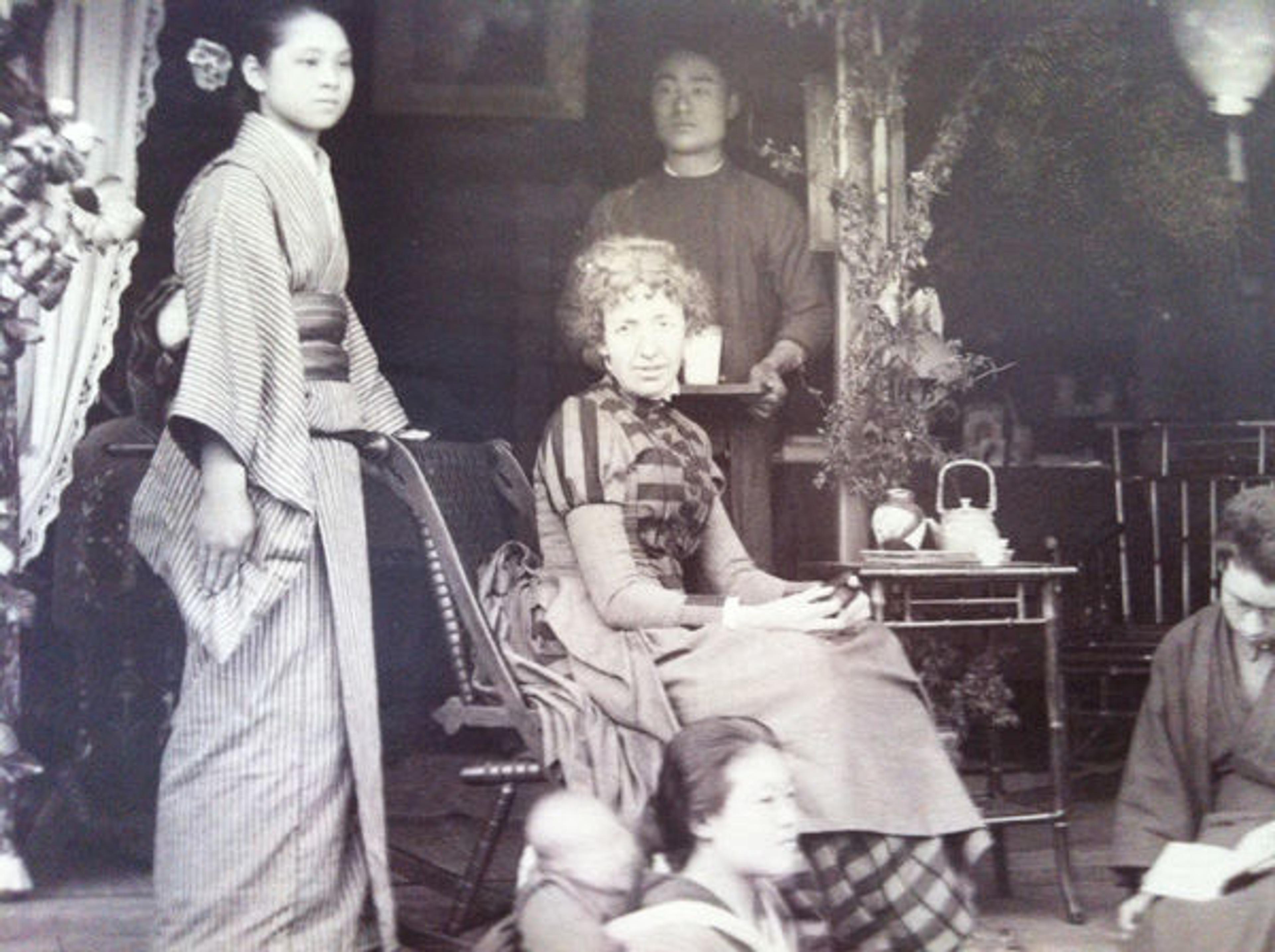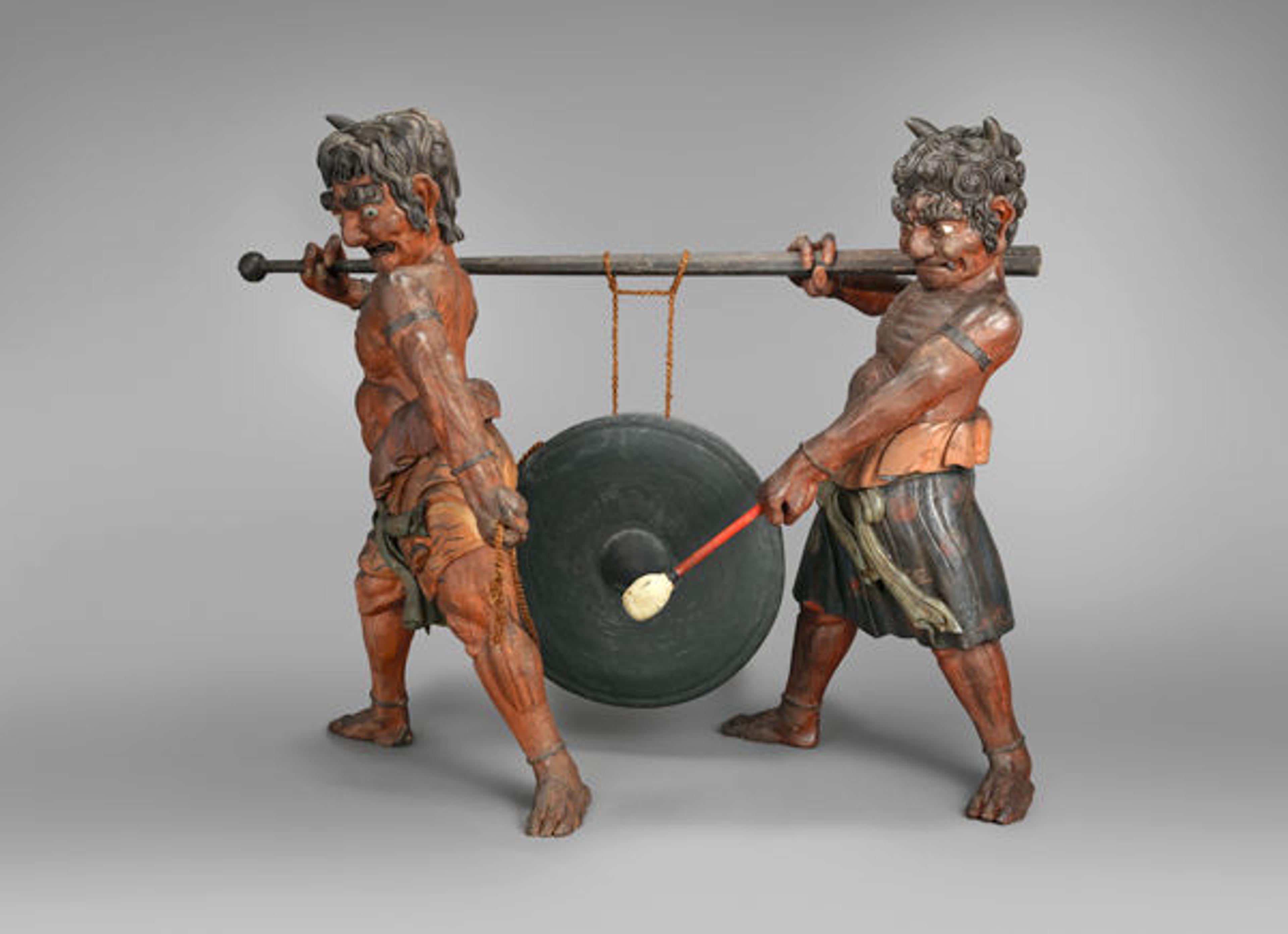
Mary Elizabeth Adams Brown, 1881
«From 1889 to 1909, Mary Elizabeth Adams Brown was regarded as the authority in America on musical instruments from all over the world. By her death in 1918 she had lavished more than 3,300 instruments on The Metropolitan Museum of Art. Her first gift, in 1889, consisted of 276 instruments—mostly objects from distant places and "savage and oriental" peoples, as she described them in the parlance of her day. By 1901 these instruments occupied five rooms, or ten percent of the total number of galleries in the Museum at the time. Brown called her collection, as an acknowledgement of its scope and in honor of her husband, "The Crosby Brown Collection of Musical Instruments of All Nations."»
It might be thought that she was inspired to acquire "exotic" instruments by being an adventurous traveler throughout the world. Although Brown did travel in Europe and would later visit major instrument collections there, her inspiration to collect musical instruments came from somewhere else—her family's relationships with foreign missionaries across the globe.
Brown's father, the Reverend William Adams, was a renowned Presbyterian minister in New York. In 1873 he became the third president of Union Theological Seminary, where many American missionaries received their early training. As a leader and a preacher, he was an influential voice in an increasingly tumultuous city and was noted for his domestic and foreign outreach. Among Adams's many international affiliations was his longtime presidency of the Board of Foreign Missions of the Presbyterian Church. He traveled extensively (though never further east than Russia), and according to Mary Elizabeth's brother, Thatcher Adams, their father's visits abroad were regularly reciprocated by returning missionaries. In a 1917 Christmas letter to his sister, Thatcher wrote about their Houston Street childhood home:
Besides relatives we abounded in missionaries. They came from all parts of the earth, from the slopes of Lebanon, from the Islands of the Sea, from Phrygia Pamphylia and the regions beyond Jordan, there was even one who had dwelt among the cannibals and whose safe return from those dangerous parishioners I always attributed to his extremely unappetizing appearance.
Mary Elizabeth no doubt heard some of the "tales of these worthy men," and they probably brought gifts to the Adams family from the places they had been posted. Some of these might have been musical instruments, which would explain why, describing herself as "always [having been] fond of old musical instruments," she sent instructions to a cousin in Florence to purchase her "first instruments," initially intended as decorations for her music room. Mary Elizabeth's expansive world view had already begun at home.
In June 1883 the Browns' personal records show their two eldest daughters receiving prizes from "Miss Doremus' Preparatory School." This school was only one of Sarah D. Doremus's occupations; she was also the corresponding secretary of the well-established Women's Union Missionary Society founded by her mother, Sarah Platt Doremus, in 1860. This organization was among the first to send female missionaries into countries where native women were isolated and deprived of physical, educational, and spiritual assistance—those whose needs could not be properly met by male missionaries. Furthermore, Mary Elizabeth Brown's missionary correspondents were augmented by her husband, John Crosby Brown, who continued the family connection to Union Theological Seminary as a board member and, later, president until his death in 1909.
In the early 1880s, Doremus had put Brown in touch with Elizabeth Stevens, the wife of a missionary in Rangoon, Burma (now Yangon, Myanmar), who wrote in June 1886:
I am at last able to tell you that the box containing musical instruments has been shipped for New York . . . its contents are so very rude and low down in the scale of civilization that [I fear] they will be [out of place] in the elegant music room you describe.
Stevens warmed considerably when describing a harp she was also sending. She enclosed a list of instruments she had purchased, five of which appeared in Brown's first collection catalogue, Musical Instruments and Their Homes (1888). In 1898, six months before her death, Stevens wrote with enthusiasm of another, more elegant Burmese harp she had purchased—undoubtedly the one that is highlighted in the Musical Instruments galleries today, gilded all over and featuring scenes from the Hindu Ramayama on its body.

Saùng-Gauk. Myanmar (formerly Burma), 19th century. Wood, various materials. The Metropolitan Museum of Art, New York, The Crosby Brown Collection of Musical Instruments, 1889 (89.4.1465 a, b)
Correspondence shows that many friendships developed between Mary Elizabeth Brown and the missionaries she encountered. As they had with her father, many visited the Browns' homes, particularly their country home, Brighthurst, in Orange, New Jersey. As required by Brown, they all signed the visitors books. Dr. George E. Post, a Union Theological alumnus and a University of New York Medical College graduate, was for many years professor of surgery at the Syrian Protestant College in Beirut. In 1886 he sent Brown a carefully labeled box of "Near Eastern" instruments, and upon visiting the Browns a year later, signed the visitors book in Hebrew.
Earlier in 1885 George Gilmore, another Union Seminary graduate and missionary, was a Brighthurst guest. Later that year he was one of three men picked to establish the first English-language school in Korea, under the patronage of King Gojong. By 1888 he had managed to put together a representative group of Korean musical "instruments of torture," as he called them, which he sent to Brown. The Western missionaries often wrote disparagingly about the instruments and music of indigenous peoples around the world, but Brown did not share those opinions and never wrote in similarly judgmental terms. Instead, she sought out and welcomed musical instruments of all types, no matter how unusual or unconventional they appeared to her contemporaries.
The Reverend Henry N. Cobb, corresponding secretary of the Board of Foreign Missions, was a friend and neighbor to the Browns in New Jersey, and for years was like a magnet that attracted missionaries worldwide to Brown. In 1886 he introduced her to Reverend James L. Amerman, an independent missionary in Tokyo. Most of the Japanese instruments illustrated in Brown's 1888 catalogue were sent by Amerman through the long, slow shipping route of the Suez Canal. Amerman informed her that he had consulted with "one skilled in Japanese music" in order to acquire the instruments, and later suggested knowledgeable corrections to her draft catalogue.
Brown's many missionary correspondents always showed an interest and pride in the work they did to assist her, as maintaining this unusual contact at home must have provided a unique way for them to delve more deeply into their foreign assignments. At the back of the first Brighthurst visitors book, which spanned 1874–88, Brown compiled a list of languages in which her guests had signed; there were more than thirty. She clearly collected people as well as instruments.
The Browns' interest in Japan was augmented by the fact that a cousin, Annie Hammond Bradshaw, was a missionary in Sendai, north of Tokyo. There is no evidence that Bradshaw sent instruments to New York, but she did send numerous photographs of herself at work.

Brown's cousin, missionary Annie Bradshaw, in Japan, 1890
Brown's most engaging and faithful correspondent was also in Japan: Florence H. Learned, who, along with her husband, Dwight W. Learned, a professor at Doshisha University, had been missionaries for over twenty years. At the end of the nineteenth century, when Brown had become an experienced and selective collector, the two women corresponded in detail, with each often sending the other drawings of possible acquisitions. Learned's most stunning find was an enormous gong anchored by two carved oni, or three-toed devils. It must have occasioned considerable comment at the Museum when it arrived two days before the opening of the May 1899 social season.

Gong Held by Oni. Japan, early 19th century. Metal, wood, lacquer, polychrome. The Metropolitan Museum of Art, New York, The Crosby Brown Collection of Musical Instruments, 1889 (89.4.2016a–e)
Locating instruments was only part of the chore Brown imposed on her missionary contacts. Arranging financing and transportation to New York was crucial, since shipping was often as costly as the weighty or fragile objects themselves. Because she sometimes sent missionaries small amounts of money as well as doctrinal and practical publications, many became Brown's "pen pal" friends. For instance, the isolation of Learned as missionary and wife of a professor was palpable from her letters. On March 4, 1899, she wrote to Brown:
[I] shall feel almost sorry to have our business relations cease. You have been such a kind, generous sympathetic friend, I feel as tho [sic] I had really known you as a dear personal friend tho [sic]I have never seen you nor can I expect to, for there is little prospect that we shall return to the United States before our work here is done.
On April 4 she wrote again: "May I be so bold as to say that when you wish to send me a little remembrance again, nothing will please me more than your own photograph."
Related Link
Of Note: Mary Elizabeth Adams Brown's Collection Celebrates 125 Years at the Met